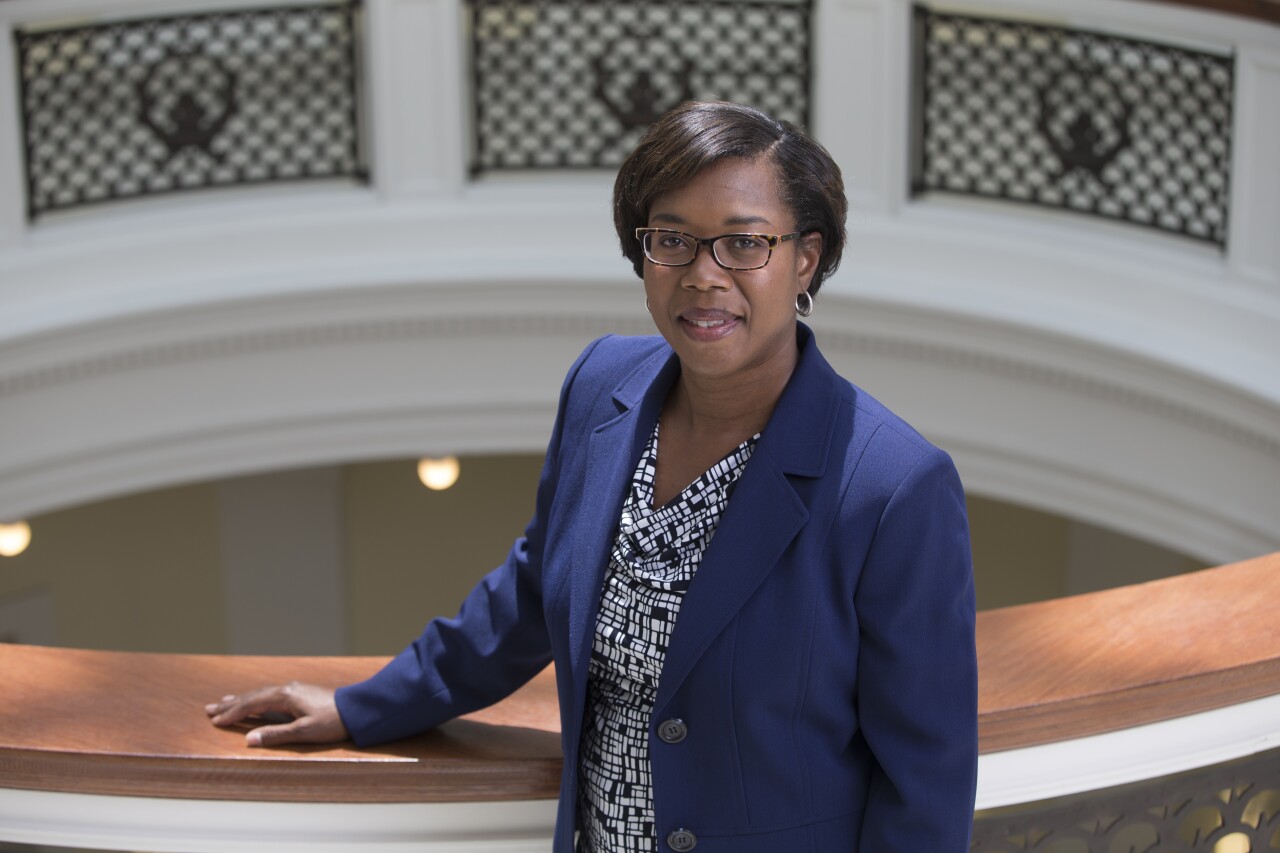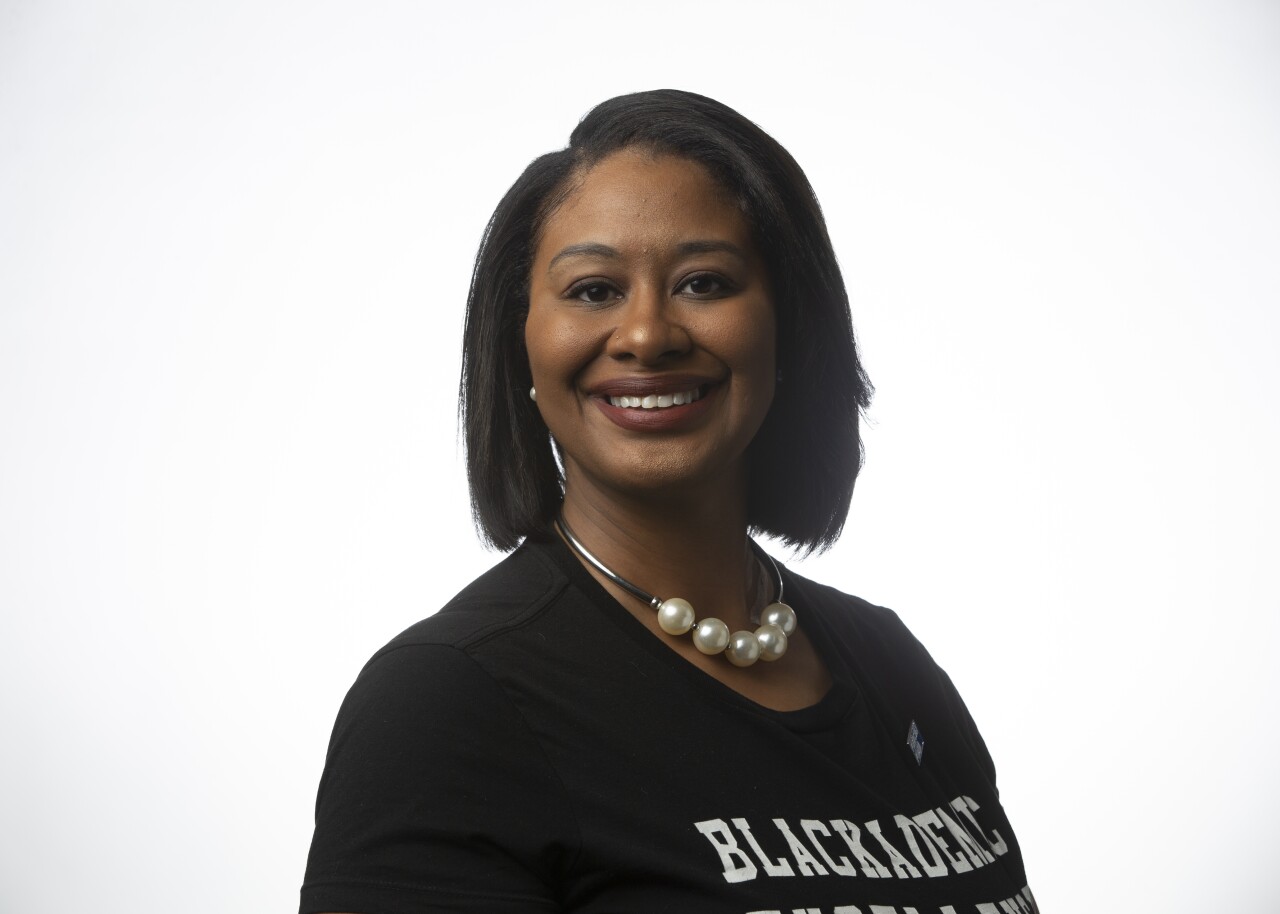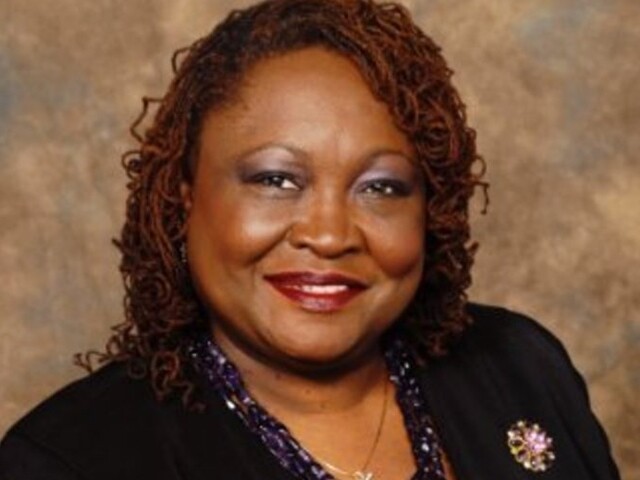CINCINNATI — Long before the most recent protests calling for racial justice started across the nation, 11 women at the University of Cincinnati had begun the painful work of ending racist behaviors at UC.
Associate Vice Provost Keisha Love launched the effort a year and a half ago to build and repair relationships between UC’s Black and white female faculty members.
It grew out of Love’s work to help women of color advance within the university. In that work, she said she kept hearing about tensions and communication problems between white and Black female faculty.
“As a Black woman, I have definitely had that experience,” Love said. “So I knew exactly what the women were talking about.”
A mutual friend introduced Love to Karen Faaborg, a retired UC professor and former senior-level administrator who is white. When Faaborg was a vice provost at UC, she said, she worked on efforts to address racial tensions on campus but never saw much progress.

After that first lunch meeting with Love, Faaborg said she understood why.
“What I have learned, which is profound, is that we are the privileged,” she said of white female faculty. “We are part of the power structure. We are the ones who can make the difference.”
Love and Faaborg decided other women on campus could benefit from the kind of frank and open discussions the two of them had. Soon, a group of women comprised of three Black faculty and four white faculty began meeting with Love and Faaborg, while two UC staff members provided support. The women decided to name the group BRIDGE, for Building Racial Awareness and Insight through Dialogue and Education.
Members of the group agreed to talk with WCPO. They said they hope the lessons they have learned and friendships they have built can serve as a model for others as Greater Cincinnati and the nation wrestle with racial disparities and vast gaps in understanding between white and Black people.
WCPO interviewed Love and Faaborg together and conducted separate interviews with three other members of the group: Littisha Bates, associate dean for inclusive excellence and community partnership and associate professor of sociology in UC’s College of Arts and Sciences; Karen Bankston, an adjunct professor in UC’s College of Nursing; and Theresa Culley, a professor and head of UC’s Department of Biological Sciences.

They all said the coronavirus pandemic has slowed the work of BRIDGE, but it feels more urgent now than ever.
Below are excerpts from those interviews, arranged to help explain why the women decided to take part in the group, what they have shared with each other, what they have learned from each other and what they hope will come next.
Why get involved?
Littisha Bates: “It’s kind of two things. One is, all the work that I do around trying to create inclusive spaces, trying to create safe spaces but also ensuring there are spaces and opportunities for those who want to do the work to be able to do the work safely.
“The other is, Keisha asked me.
“The ask for Black women to continually participate in this work, to continually participate in this emotional labor, it’s important who the ask comes from. When Dr. Love asked us to participate, there was no hesitation.”
Theresa Culley: “I have a really good friend and colleague in my department who happens to be African American. So when the Black Faculty Association was talking about this, they were trying to come up with names of white female faculty who, I guess, had a good track record.
“At the time, I had no clue of the challenges that female, Black faculty had in working with white female faculty. I was sort of off in my land of ignorance. But the more we talked about it, the more I realized that this is a huge problem.”

Karen Bankston: "I was happy that I got invited to participate. It’s an interesting way for Black and white women in an institution – and I’m utilizing the word institution beyond UC – to try to find a way to break some historical challenges that each face."
Karen Faaborg: “When I was first invited to that lunch meeting with our friend who got us together, I came to the meeting saying, ‘What are you talking about?’
“I have learned so much.
“We shouldn’t just be sitting there with our hands folded, saying, ‘Well, I understand, and it’s terrible.’ We have to do something. And I am starting to learn, after all those many years of being in the faculty and an administrator trying to do something, I’m finally beginning to learn what I can do.”
What are the conversations like?
Keisha Love: “We sort of put the issues out there on the table. You know, what are the tensions. We’ve talked about things such as power, privilege, white supremacy.
“Some of the meetings we will read an article and will process the article together. It’s interesting to hear that the Black women in the group who read the article could have a completely different takeaway from the white women who read the article. We talk about that, and we bring those different perspectives to the table.
“We have done things such as role plays and case studies. So what do you do when you’re sitting in the meeting and someone makes a racist comment or a sexist comment? How do we show up and support one another?
“We’ve practiced those things so that we can be present for each other and support one another in those situations.”
Bates: “Even though we had white women in our group who were further along in our journey, they still weren’t fully aware.
“We felt completely safe with them, but we were also able to get them to reflect on experiences that they didn’t read the same way we read them – such as the way white women weaponize their fragility.
“Being in a meeting with a group of colleagues and having a visible disagreement with a white woman, which is just a disagreement among colleagues. But she becomes so upset that she begins to cry.
“Her tears are now my burden because I have made this white woman cry. The stereotypes are now unleashed because I am the aggressor.
“What we often like to point out in these situations is, ‘I want you to reflect on what it is that has made you cry. Is it that you have been called out? Is it that you really feel threatened? What is it that you think I’m going to do to you in this meeting? What tropes are you pushing to in this place to respond to a collegial disagreement in this way? And to also think very carefully about how others in the room are responding to this display of your tears.”

Culley: “Initially with the group, a lot of it on my part was, ‘What if I inadvertently say the wrong thing or offend someone in some way?’ Now I can say, ‘Hey, I have this situation, or I think I made a mistake. I said this to someone, can you guys let me know?’
“In one of our earlier meetings, we were sort of just still getting to know each other. We were going through case studies; the situation was something about tenure.
“All the Black faculty viewed it through this particular lens that the white female faculty completely missed.
“I had to say, ‘Well, wait a minute everyone. All the Black female faculty were saying one thing, and the white female faculty were saying another thing.
“I realized that I was just blindly going in and thinking one thing and just assuming that everyone around me was interpreting it the same way. But that wasn’t true.”
What has everyone learned?
Culley: “My 'aha moment' is that each of us have different life experiences that color our perception of the world.
“We come from a certain experience, and it’s very difficult to understand and comprehend the experiences of others unless you put yourself in their place.
“You have to sit there and listen. And not judge. Just listen.”
Bankston: “What I learned was the significance of the generational difference between me and my younger Black colleagues.
“The Black faculty who are in the group are in their 30s and 40s. And I’m in my 60s. So my transition is much different from theirs, and their anger is much different than mine.
“What the young people are saying is, ‘We’re not doing it anymore. We shouldn’t have to do that.’ And you know what? I absolutely agree.
“I’m opening up my mind and my heart and my pain to things I had kind of left behind because I just want to live my life.”

Bates: “One of the nice things about being in these spaces is I get a better understanding of how white women are reading situations.
“It’s almost like a card game. If you know what card your opponent has, you’re more likely to win the game.
“They’re in some ways showing us the cards. So having a much better understanding of how white women show up to these spaces – I’m able to walk into situations with other white women and have a playbook, if you will.
“That’s very helpful. Because as a Black woman, I have to be very strategic about how I navigate these spaces.
“I am not suggesting that all white women are a monolith. But what I am suggesting is that white supremacy and white privilege is very predictable.”
What’s next?
Culley: “I think it would be absolutely wonderful if the university could be viewed externally by others within our African American community as somewhere students want to go.
“As a scientist, you really want to come up with the best ideas possible. You really need to reach out of your little safety box and consider all types of ideas.
“If you want to have these diverse ideas, people thinking outside of the box, you need to have people who have the experiences of being in a different environment. That’s where innovation occurs. That’s where these great ideas come out.
“We’re still working on it. We don’t have all the answers. But, at least for myself, I feel like the group for me personally has been helping me grow in the direction I need to, to have a more just society. And that seems like high talk. But that really is what it’s about.”
Faaborg: “Not all white women are able to do this. I think you have to be willing to let your guard down and listen, and that’s the most important thing.
“What we white women now that are working with Keisha on this are learning to do is to start to become a sponsor. I like the word sponsor. Some people use ally or advocate. But there’s something about being a sponsor when you are in a faculty department and there’s a young Black woman in that department that we’ve hired because of her wonderful talents and abilities and background and knowledge and expertise.
“We sit there and allow her to be the only Black person in the room and who when she tries to speak is sometimes interrupted, ignored.
“We have to sponsor that woman. We have to step in – either in that moment or at a moment in a private office with someone later to say, ‘You know, we’re better than this. Here’s what just happened. Maybe you didn’t realize what you just did.’
“You know, there are jerks in the academy like there are everywhere. But most people, whether at the university or any other institution, are not that way. They care. They want to do it right. They don’t realize what they just did.”

Love: “There’s this perception that because white women are marginalized because of their gender, they understand the experiences of Black women. And that is true, to a certain extent. But there’s a complexity there because for Black women, there’s oftentimes gendered racism. So, yes, we are oppressed by two identities: Being African American and being a woman.
Bates: “We are the winners of the intersectional lottery – except there is no grand prize.
“It is a marathon, not a sprint. And just because you don’t know doesn’t make you a bad person. That is super important to me as it relates to this work.
“A lot of people -- white people, in particular -- get paralyzed because they think as we talk about systematic oppression that they’re bad people. That’s not the message. The message is that the system is not equitable, and we have the power to make a difference. So what are you able to do to contribute to that difference being made?”
Love: “This group really has served as a model for how you can bring people together.
“When something good happens, we celebrate one another. We applaud one another. And vice versa. When something tragic happens, we process it as a group, and we talk about it as a group.
“We are proof that you can form true partnerships and true friendships across the races.
“Start small. Do your part. And learn from one another.”
Lucy May writes about the people, places and issues that define our region – to celebrate what makes the Tri-State great and shine a spotlight on issues we need to address. To reach Lucy, email lucy.may@wcpo.com. Follow her on Twitter @LucyMayCincy.





